Shopify vs Square: Which is Ideal for Expanding Your Online Business?

Choosing the right eCommerce platform is crucial for expanding your online business. Shopify and Square are two popular options, each offering unique features and benefits. While Shopify is known for its powerful tools and flexibility, Square is popular for its affordability and user-friendly interface. In this article, we will compare Shopify and Square to help you decide which platform is ideal for growing your online business.
Overview of Shopify and Square
What is Shopify?

Shopify offers a comprehensive eCommerce solution that allows businesses of all sizes to quickly launch and manage online stores. According to BuiltWith, Shopify powers 4.7 million stores all over the world, making it one of the largest eCommerce platforms globally.
👉 Curious to know if a successful website is built on Shopify? Here’s how to find out if a website uses Shopify – a helpful way to spot real-world examples before making your final decision.
Shopify provides everything needed to run an online business effectively. This includes over 160 professionally designed templates and over 8,000 diverse apps to customize your store. It features smart inventory management, a point-of-sale system, automated sales tax calculation, and numerous other tools to streamline operations.
What is Square?
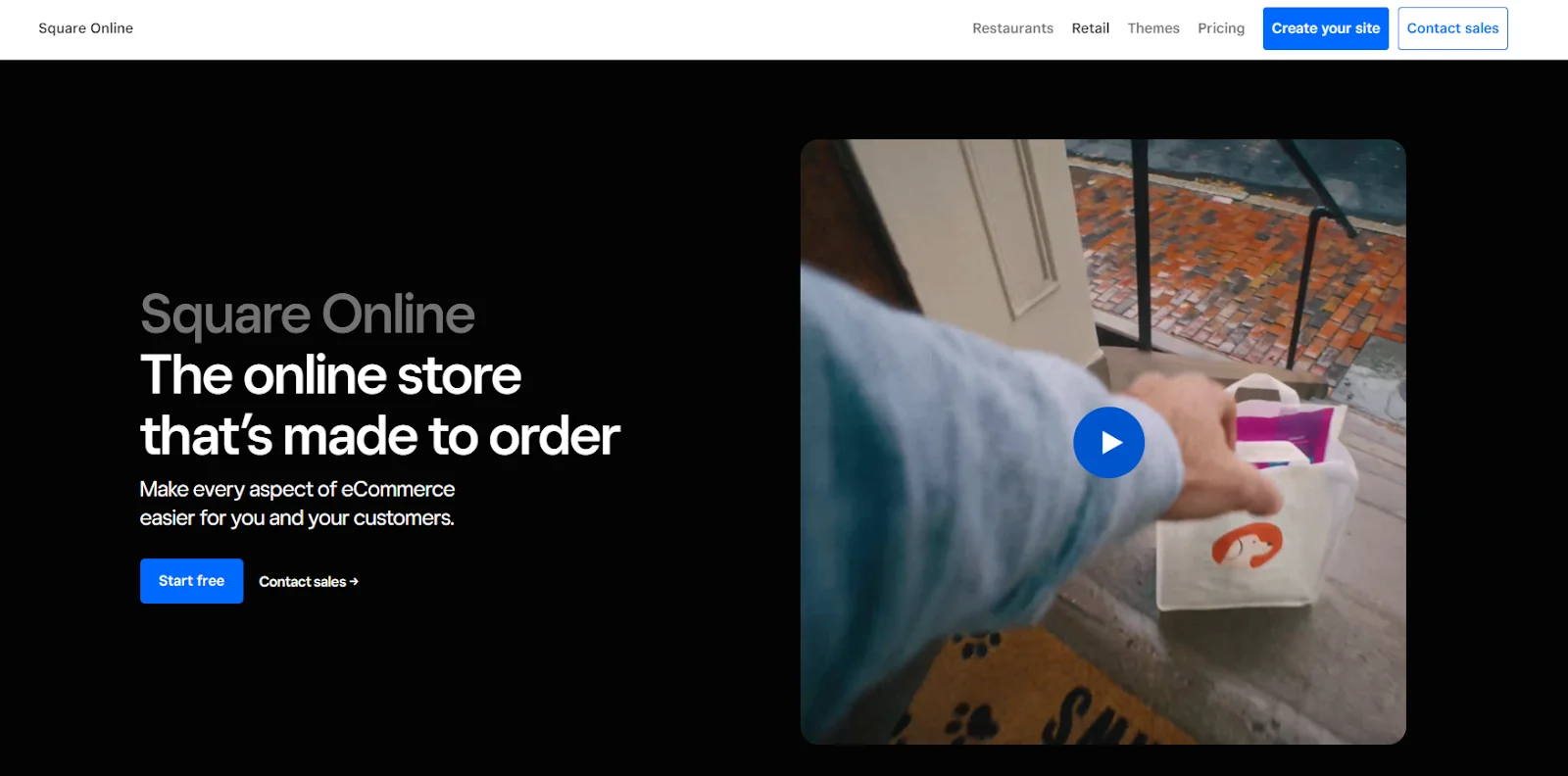
As a leading payment provider, Square expanded into eCommerce by acquiring Weebly in 2018. This move led to the introduction of Square Online Store, a cloud-based website builder tailored for small businesses. Currently, there are 259,220 active stores operating on the Square Online platform.
Square Online offers new features and a free eCommerce plan. It seamlessly integrates with Square POS (Point-of-Sale) systems, automatically syncing inventory across stores. For brick-and-mortar businesses seeking value and efficiency, Square Online is an excellent choice.
Shopify vs Square: Pros & Cons
While both Shopify and Square offer essential eCommerce features, each platform excels in different areas.
Square is ideal for small businesses focused on in-person sales (like pop-up shops or brick-and-mortar stores). It features straightforward POS hardware tailored for specific business types.
On the other hand, Shopify is well-suited for larger businesses selling primarily online to a broad international audience. It boasts extensive inventory management, shipping capabilities, and a wide array of integrations.
Explore the table below for a detailed comparison of the pros and cons of each platform.
| Shopify | Square | |
|---|---|---|
| Pros | * Easy setup and start selling * Flexible pricing plans * Customizable themes * Comprehensive reporting and analytics * Multi-currency and multi-language capabilities * Multi-channel and omnichannel selling * Over 100 payment processors 8000+ apps * Automatic sales tax calculation * Built-in email marketing tool * Strong security features * 24/7 customer support via live chat, phone, and email |
* Easy setup and start selling * Affordable pricing, including a free plan * Support for various product types * Seamless integration with Square POS for online and in-person sales * Effective inventory tracking for both online and brick-and-mortar stores * Integration with other eCommerce platforms * Good security features * Decent customer support |
| Cons | * Higher costs for new businesses * Additional transaction fees unless using Shopify Payments * Limited free themes (only 12 available) * Reliance on add-ons for certain features * Limited product options and variants * Basic blogging features |
* Limited website templates and customization options * Fewer payment processor options * Smaller selection of add-ons and third-party apps * Limited features for medium to large businesses |
In the latter part of this comparison, we’ll delve deeper into what both Square and Shopify have to offer. Which platform is better suited for your needs - Shopify or Square?
Read more:
- Shopify Vs Wix Vs WordPress: An In-Depth Comparison
- Shopify vs Webflow: Which is suitable for your business?
- Shopify Vs MailChimp: Which Tool Is Better For Your Project?
Comparison Between Shopify and Square
| Feature | Shopify | Square Online |
|---|---|---|
| Pricing | Starts at $25 per month | Starts at $29 per month |
| POS System | 2 built-in options: Shopify POS Starter & POS Retail | 4 options: Retail, Restaurants, Appointments, Point of Sale |
| Ease of Use | Drag-and-drop design, visual cues | Requires more time to learn |
| Marketing Features | Robust built-in marketing & analytics | Basic analytics features |
| Themes & Templates | 12 free themes, 160+ premium themes ($140-$400 each) | Same templates as Squarespace 7.1 |
| eCommerce Features | Wide range of sales tools & payments | Stronger options for digital products |
| Dropshipping | Various dropshipping apps | Fewer options for fulfillment services |
| Internationalization | Multi-language support, multiple currencies | Multi-language support, single currency |
| Apps & Extensions | 8000+ apps | 31 extensions |
| Support | Email, Live Chat, Phone, Help Center, Forum | Email, Live Chat, Contact Page, Help Center |
| Security | SSL Certificates available, comprehensive security | SSL Certificates available, robust security |
1. Pricing
Shopify Pricing
Shopify lets you explore its platform with a 3-day free trial, extendable for three months for just $1/month. After trying it out, choose from three main plans: Basic Shopify, Shopify, and Advanced Shopify, ranging from $25 to $2,300 per month. Annual plans save 25%. For more comprehensive details, read our Shopify Pricing Plans breakdown article.
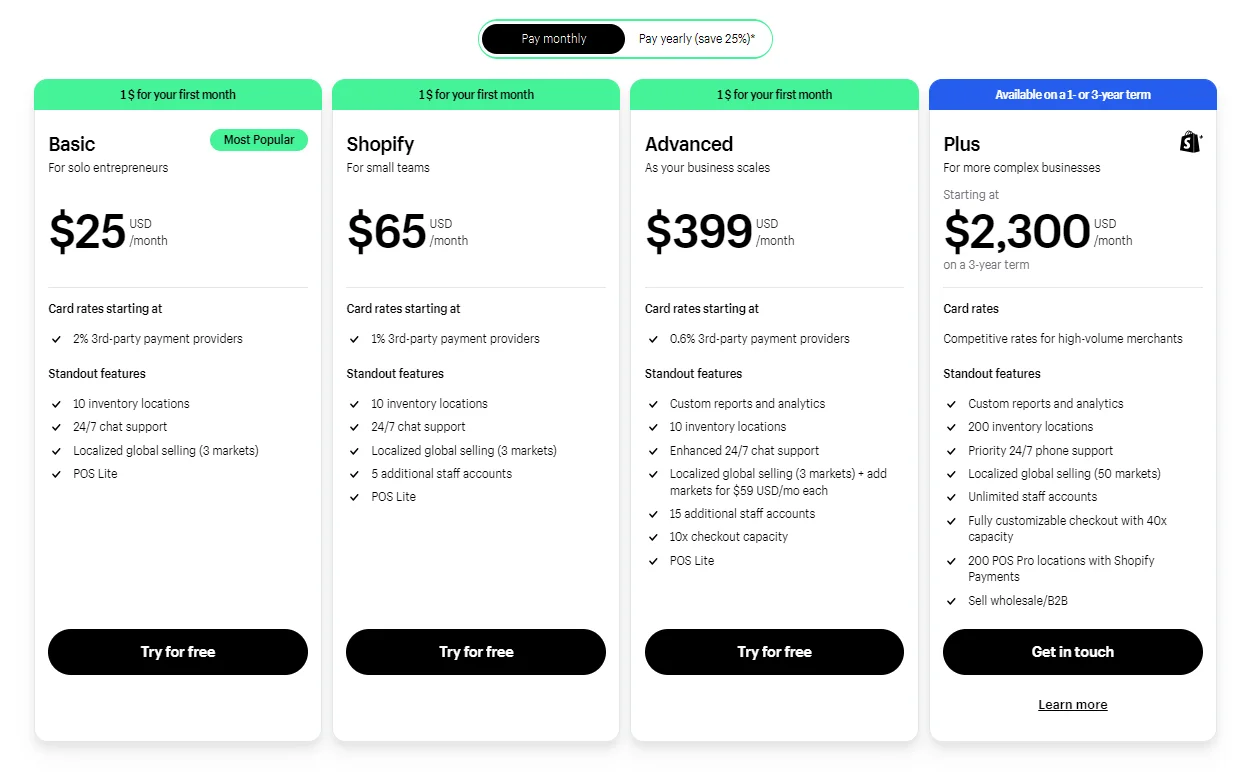
Square Pricing
Square offers a free plan to start building your eCommerce site, including essential features with no hosting or monthly fees. Advanced features like site statistics and reporting come with Plus for $29/month or Premium for complex operations. However, Square charges higher transaction fees than Shopify.
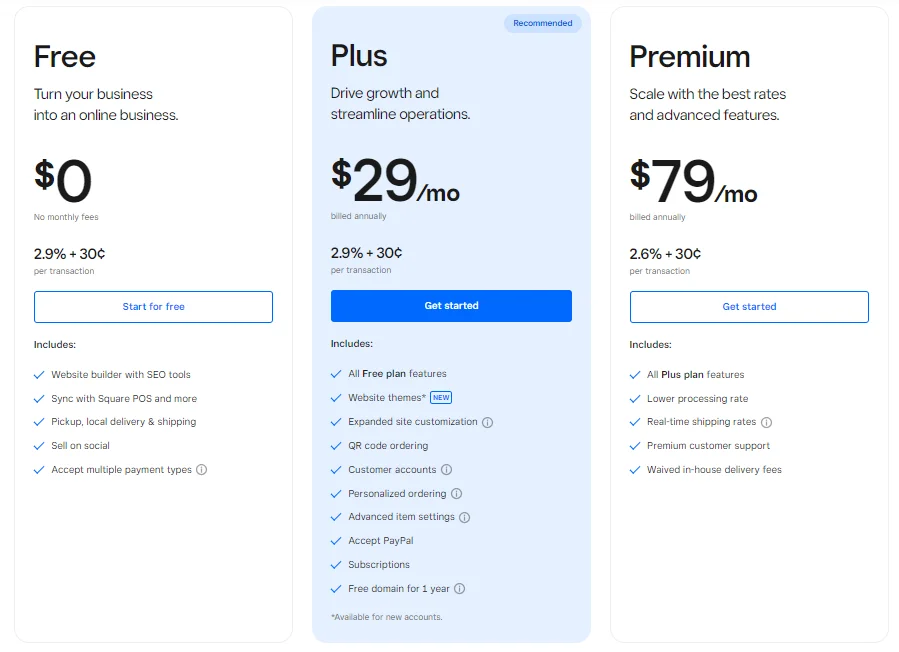
Verdict: While Square is budget-friendly with its free plan, Shopify provides more robust features and flexibility across its pricing tiers, albeit with transaction fees unless using Shopify Payments.
2. Point-of-Sale System
Both Shopify and Square offer top POS systems for retail businesses, but how do they compare? Let’s see who comes out on top in the battle of Shopify vs. Square for point-of-sales.
Shopify POS System
Shopify’s POS system is packed with features to help merchants manage products, employees, and inventory easily. The software allows store owners to add unlimited items, automatically categorize products, and create variations based on material and color. It also includes advanced reporting and analytics tools to track store performance and develop effective sales strategies.
There are two pricing options for Shopify POS: Starter and Retail
- Shopify Starter
- $5/month
- Shopify Retail
- $89/month per location
- Ideal for busy retail businesses with large inventories and staff
- Free for Shopify Plus users
Note: $1/month applies to all Shopify plans for the first months for new users to experience the platform.
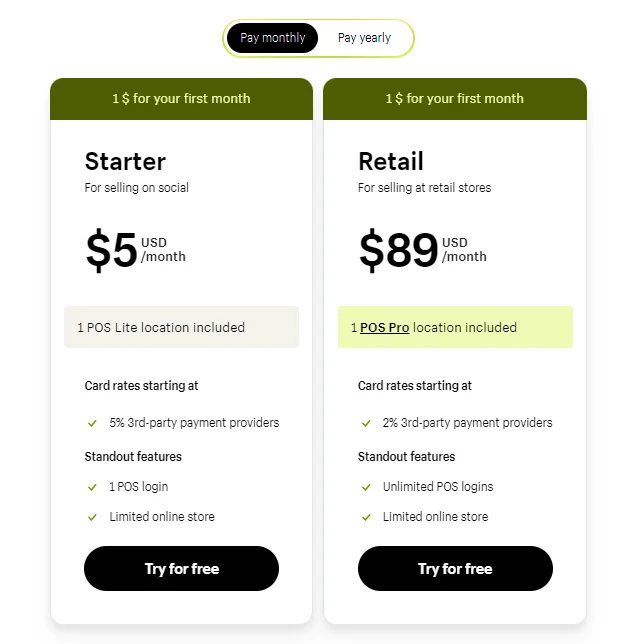
Square POS System
Square offers four POS options: one general app and three specialized for restaurants, retail, and appointments. These come with robust features for inventory tracking, customer and order management, and real-time analytics.
Square POS is favored by new businesses for its simple and transparent pricing. There are no monthly or setup fees, and a free card reader is included. Transaction fees start at 2.6% + 10¢ per payment.
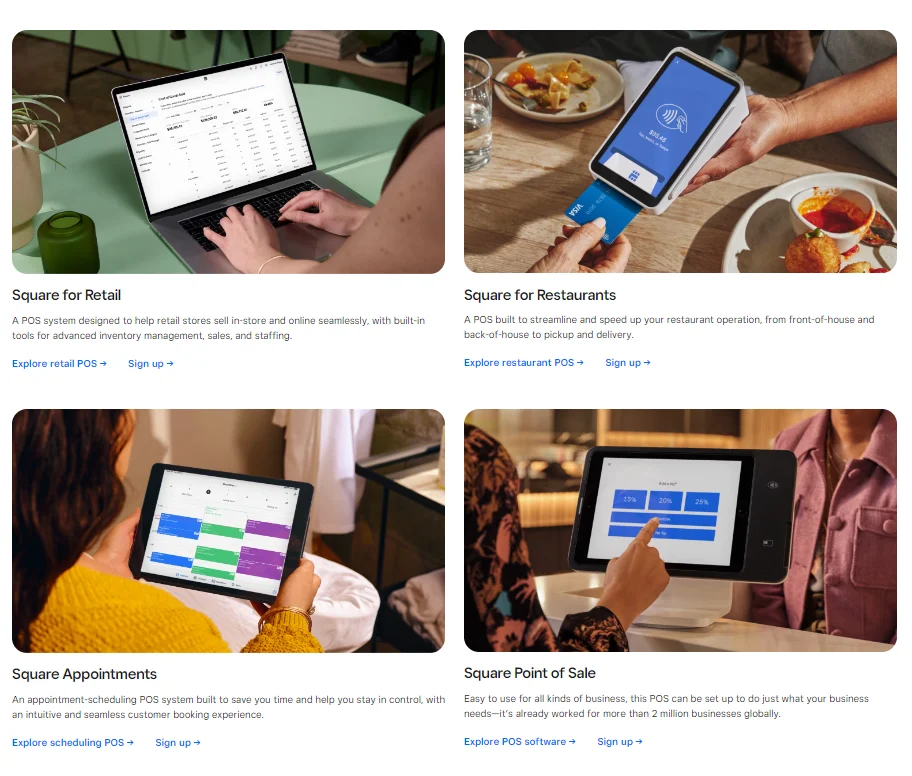
Verdict: Both Shopify and Square offer user-friendly, feature-rich POS systems for online and in-person sales. However, Square has an edge due to its free installation and complimentary card reader.
3. Ease of Use
Shopify Ease of Use
Shopify manages to blend powerful features with a user-friendly interface. Even those with little to no technical knowledge can start an online store by following the platform’s Get-Started checklist.
Shopify guides you through each step, with everything laid out clearly. Day-to-day use is also simple. If you ever get stuck, the Shopify Help Center is there to assist.
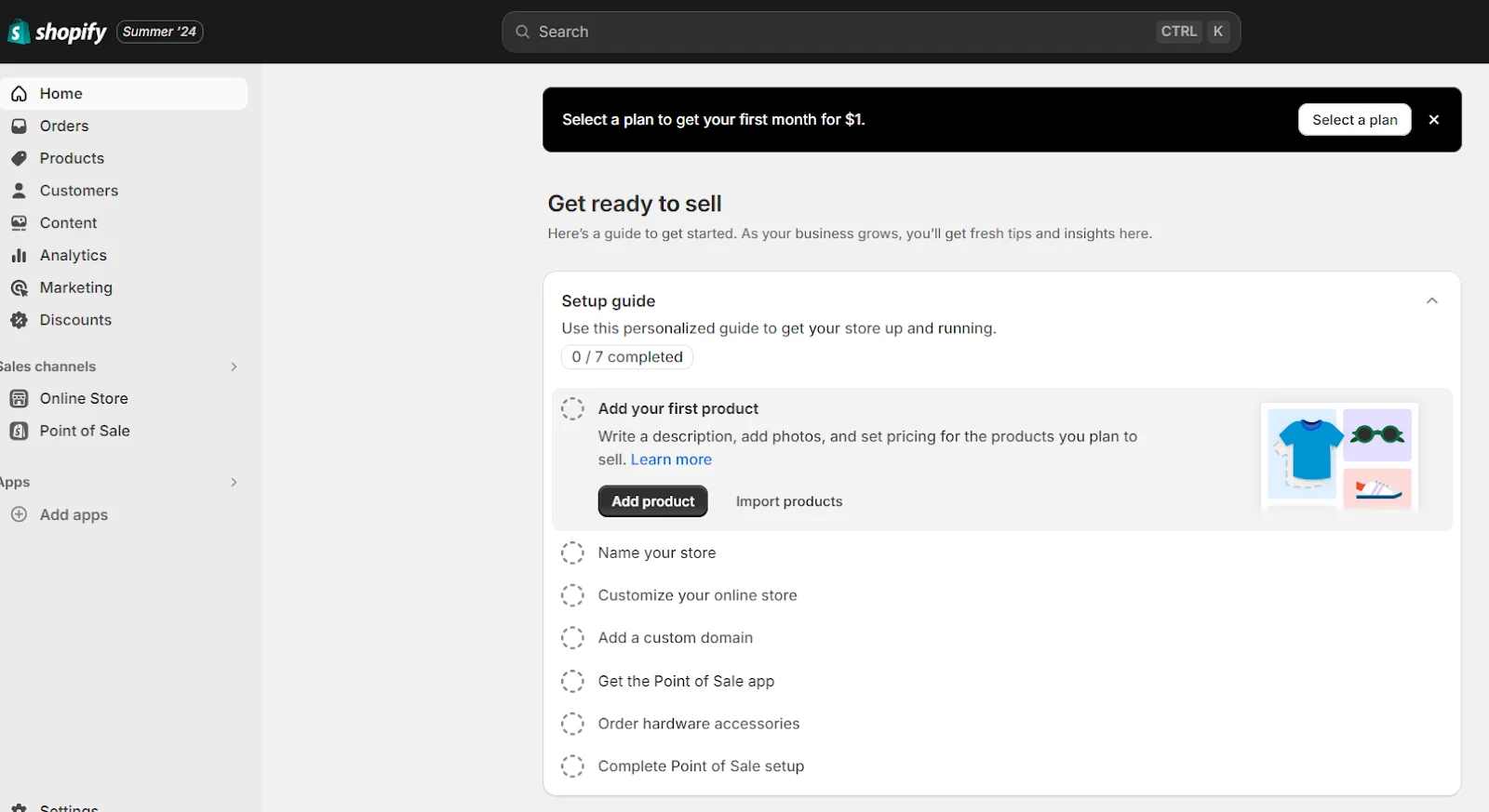
Square Ease of Use
While Shopify takes time to develop, customize, and set up an online store, Square simplifies the process by handling most of the work. You just need to enter your business name and address, select features, upload a logo, and choose colors. Your store appears with these details, and a few more texts and products will have your online business ready to go!
Square also has a drag-and-drop editor, allowing you to quickly and easily make changes. This is something Shopify’s section-based editor doesn’t offer.
Verdict: Both Shopify and Square offer user-friendly interfaces. Shopify provides detailed guidance for each step, while Square’s drag-and-drop editor makes adjustments easy. With either platform, creating a functional eCommerce store is quick and straightforward.
4. Payment Gateways & Transaction Fees
Shopify Payment Gateways & Transaction Fees
Shopify supports over 100 payment processors, including Stripe, PayPal, Google Pay, and Apple Pay. Using Shopify Payments, available in 23 countries, eliminates transaction fees and provides access to Shop Pay. Credit card processing fees apply based on your plan and order volume.
Square Payment Gateways
Square Pay is the main option, accepting major credit cards and supporting Google Pay and Apple Pay. Transaction fees are 2.9% + $0.30 for online payments and 2.6% + $0.30 for in-person payments, with higher fees for invoices or manual entries.
Verdict: Shopify wins with more payment options and the ability to eliminate transaction fees using Shopify Payments.
5. eCommerce Features
eCommerce features are crucial when building an online store. Shopify has been a well-known leader for years, while Square is a newbie in the market. Can Square compete? Let’s see how they stack up:
| Shopify | Square | |
|---|---|---|
| Online Store | ||
| Website design | 100+ themes (free & paid) | Limited themes |
| Inventory Management | ||
| Number of products | Unlimited | Unlimited |
| Product variations | Up to 100 per product | Up to 250 per product |
| Auto sync with POS | Yes | Yes |
| Stock management | Yes | Yes |
| Checkout | ||
| Abandoned cart recovery | All plans | Performance plan and higher |
| Gift cards | All plans | Performance plan and higher |
| Automatic tax calculation | Yes | Yes |
| Checkout options | 100+ payment gateways | Limited |
| Order & Fulfillment | ||
| Shipping label printing | Yes | Yes |
| Shipping rate discount | Up to 88% | Up to 55% |
| In-store and curbside pickup | Supported | Supported |
| Dropshipping | Supported | Not supported |
| Marketing | ||
| SEO | Basic SEO tools | Basic SEO tools |
| 301 Redirect | Yes | Yes |
| Google Analytics | Yes | Yes |
| Blogging | Basic blogging features & SEO | Basic blogging with "Stories" tool |
| Social media integration | Yes | Yes |
| Built-in email marketing tool | Yes | Yes |
| Third-party apps | Mailchimp, Klaviyo, Campaign Monitor... | Mailchimp |
Verdict: Shopify offers a comprehensive set of sales tools to support and grow your online business, making it the winner in this round. Whether you’re new or looking to scale, Shopify has everything you need for long-term success.
6. Multichannel Selling
It’s important to sell your products on multiple channels as customers shop on various platforms. Let’s see how Shopify and Square support multichannel selling.
Multichannel Selling with Shopify
Shopify supports multichannel selling, making it easy to manage and sell products on various platforms. In addition to your online store, Shopify provides Point of Sale (POS) systems for in-person sales and Buy Buttons to turn any website or blog into an online store. You can also add other sales channels through apps and integrations from the Shopify App Store, allowing you to connect with online marketplaces and social media.
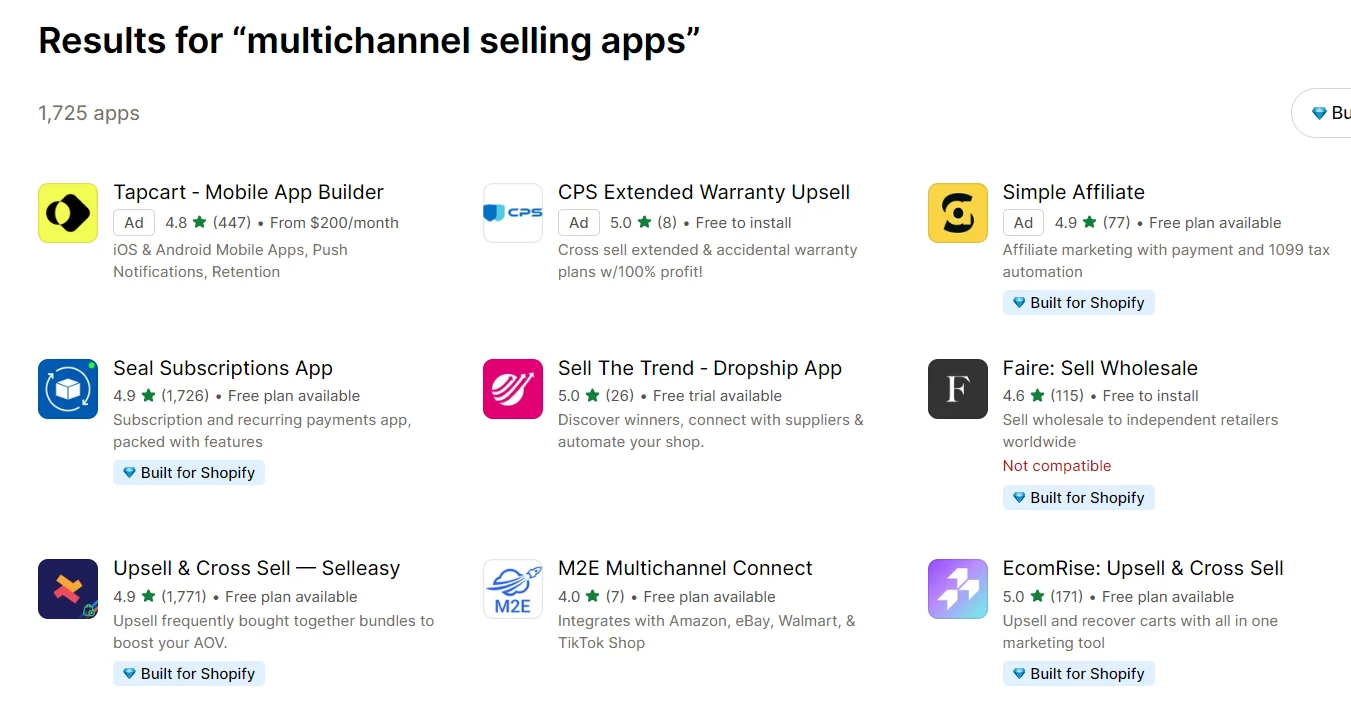
Multichannel Selling with Square
Square also supports multichannel selling. With Square Online, you can create a free online store, add checkout buttons to existing websites or blogs, and generate payment links or QR codes for easy transactions without a website. Square also integrates with social media and Google Product Listings, allowing customers to find and order your products through Google Search, Shopping, or Images.
Verdict: Both Shopify and Square offer great multichannel selling options, but Shopify stands out with more integrations and flexibility for running your business across multiple platforms.
7. Globalization
Shopify Globalization
Shopify supports millions of businesses in 170+ countries, making it a top choice for global selling. With Shopify Plus, you get features designed for international growth:
- Ship worldwide in 1-5 days with discounted rates.
- Customers can prepay VAT, duties, and local taxes.
- Local payment methods are accepted.
- Automatically convert prices to 130+ currencies.
- Provide language translations and region-specific content.

Square Globalization
Square Online allows you to ship products globally by setting up an international shipping profile. Choose countries and set shipping rates easily. Partners like EasyShip, Shippo, and ShipBob help automate shipping and offer discounted rates.
Verdict: Shopify is better for global selling with its comprehensive international features, especially with Shopify Plus. For smaller budgets or those not ready for worldwide markets, Square’s international shipping is adequate.
8. SEO & Marketing Features
SEO and marketing are key for online business success. Let’s see how Shopify and Square compare.
Shopify SEO & Marketing Features
Shopify offers strong SEO tools. You can easily add titles, meta descriptions, images, and customize URLs to avoid errors. The platform supports blogging, allowing content creation without third-party apps. Email marketing is robust, with up to 10,000 free emails per month and automation tools.
Read more: Shopify SEO Tutorial 2023: A-Z Guide to Rank #1 [PDF CHECKLIST INCLUDED]
Square SEO & Marketing Features
Square also provides solid SEO tools, allowing customization of page titles, meta descriptions, alt text, and headings. Square Email Marketing integrates with Square POS, using AI for campaign creation. However, Square lacks blogging options, and the site speed is slower.
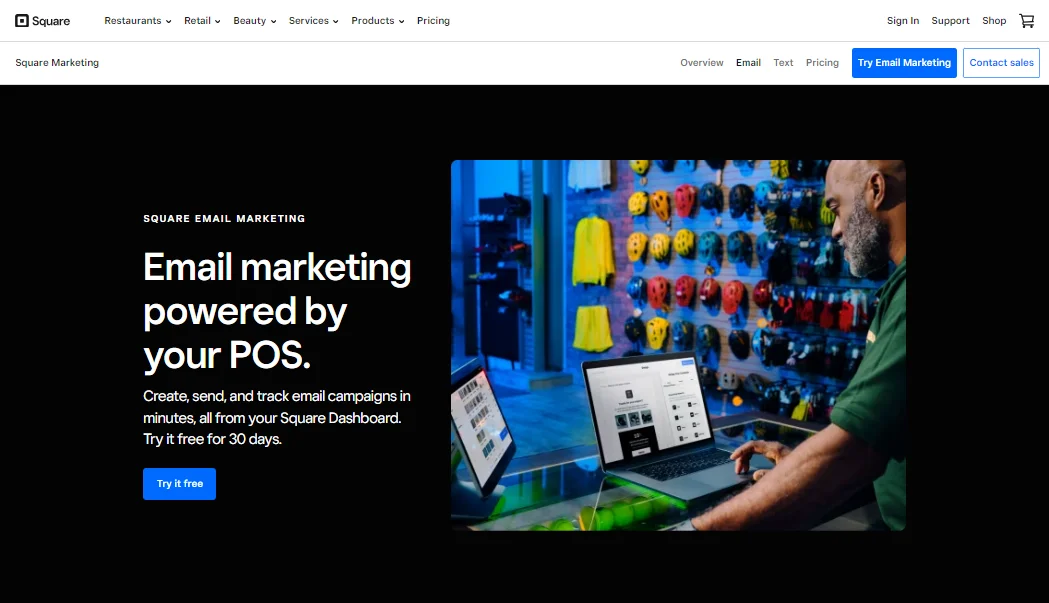
Verdict: Shopify excels with better SEO, a blogging function, and strong email tools.
9. Help & Support
Shopify Help & Support
Shopify offers 24/7 support via phone, live chat, and email. The Help Center and community forum provide additional resources.
Square Help & Support
Square offers live chat, phone, and email support, but not 24/7. The Help Center has a large knowledge base for self-help.
Verdict: Shopify wins with 24/7 support and extensive resources.
10. Security
Shopify Security
Shopify ensures security with SSL certification, secure credit card processing, and internal fraud analysis.
Square Security
Square provides secure card readers, encrypted payment data, fraud monitoring, and risk management.
Verdict: It’s a draw. Both Shopify and Square offer solid security features, including SSL, PCI compliance, and fraud protection.
Which Platform is Suitable for Your Business: Shopify or Square?
It’s tough to pick a clear winner between Shopify and Square. Shopify offers robust features for businesses of all sizes, while Square is budget-friendly and great for startups.
Choose Shopify if you want to:
- Build a scalable and flexible eCommerce store
- Use Shopify’s many integrations
- Get 24/7 phone support
- Have a strong POS system available on multiple devices
Choose Square if you:
- Have a tight budget and need essential features
- Are familiar with Square’s payment processing
- Sell in-person and want an easy transition to online sales with strong POS capabilities
Conclusion
In the end, the choice between Shopify and Square depends on your specific business needs and goals. Shopify offers extensive features, scalability, and 24/7 support, making it perfect for businesses looking to grow and integrate seamlessly. On the other hand, Square is ideal for startups and entrepreneurs on a budget, providing essential tools and strong POS capabilities. Assess your priorities and select the platform that best aligns with your vision for expanding your online business.
Read more:





